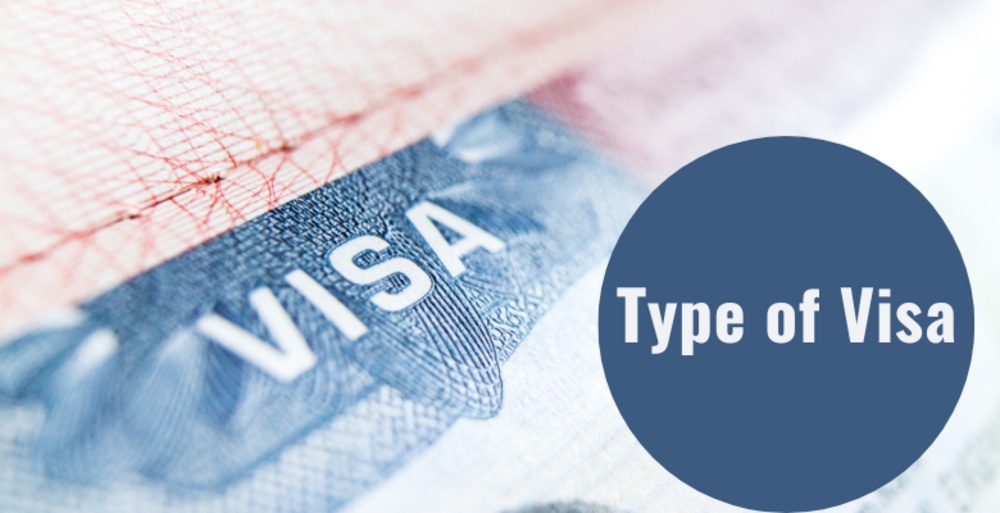If you are considering traveling abroad for reasons of study, work, or simply a trip to get to know, visit places, or vacation, you must apply for one of the different types of visas to travel abroad and enter legally.
In the following article, we will explain simply what a visa is, as well as the different types of visa, depending on the main activity you will dedicate yourself to in that country. We will also tell you a little about the countries that will or will not ask you for a visa as a Latin American citizen.
What is a Visa?
A visa is a document issued by a government that allows foreign citizens to enter its territory. In addition to the entry and stay in the country, it authorizes the foreign citizen to carry out some activities, such as studies, work, or tourism.
Therefore, there are various types of visas where each one authorizes certain activities, so it specifies what can be done with it.
Based on this, there are generally two types of visas: immigrant and non-immigrant. The first is for those who wish to stay in the country, while the second is for those who will last temporarily. We will go deeper into this later.
The specific requirements to apply for a visa vary in each country. However, recent photos are generally required: a passport with validity more significant than your stay, proof of sufficient funds, and the respective form.
Sometimes, and depending on the country and type of visa requested, a travel itinerary, work contract, certificate of admission to an academic institution, medical certificate, criminal record, letter of invitation, or proof of vaccination for certain diseases may be requested.
As for the application process, for some people, it can be complicated. First, for not know which is the most appropriate visa, especially regarding a study visa. Then, for the forms that must be filled out.
Remember that to apply for any visa type, you must first schedule an appointment with the representative of the country you wish to visit your country of origin.
It is worth mentioning that there is an immigration agent who helps foreign citizens with the visa process. They offer advice on what type of visa you require, about the requirements and forms, to accompany the face-to-face process. However, hiring their services is not essential.
Countries that require a visa to enter
Until now, we have explained what a visa is, the two main types, and the general requirements of a visa, but did you know that some countries do not request access to enter their territory from citizens of certain countries?
This is thanks to the visa waiver program.
This program is applied by some countries for business and tourism trips, with a duration of no more than 90 days, without the need to process any visa. They only need electronic travel authorization. However, not all countries participate in this program.
For example, the United States applies visa exemption to more than 30 countries. These include Chile, Spain, Germany, France, Japan, and Portugal. As long as it is for tourism or business and your stay does not last more than 90 days. You can consult the complete list on the Office of Consular Affairs website.
As a Latin American citizen, you can travel without needing a visa to the countries of the Schengen area, such as Germany, Spain, Norway, Austria, and Greece, among others. In addition to countries such as Argentina, Guatemala, Turkey, Qatar, Singapore, and Papua New Guinea, among others.
The countries that will request a visa are the United States, Canada, Cuba, Brazil, Australia, China, Russia, India, Egypt, Afghanistan, Angola, Kuwait, and the United Kingdom, among others.
For all of the above, we recommend you consult the Foreign Affairs page of your country of origin since the citizens of some Latin American countries have the visa exemption, while other citizens must present it.
If you have already consulted and the country you want to visit asks for a visa and don't know which one to process, don't worry! Next, we will talk about the types of visa.
Types of Visa
As we mentioned at the beginning of this article, there are generally two types of visas: immigrant and non-immigrant. Read carefully to know what kind of visa you need.
The immigrant visa is for those who wish to stay permanently for various situations, such as having a citizen or permanent resident family member, having a permanent job offer, or wanting to invest in the country.
Non-immigrant visas count, in turn, in several categories depending on the type of activity that will be carried out during their stay. Each of them has its requirements, rights, and responsibilities.
It is worth mentioning that non-immigrant visas do not guarantee to obtain a green card. However, they can change their category status when their activities change and the requirements established by the other type of visa are met.
Some countries have restrictions on this. For example, in Europe, you cannot enter with a tourist visa and later apply for a study visa.
So, if you plan to study, you must enter directly with a student visa or leave the country and apply for a study visa.
Student Visa
If you plan to study abroad, the study visa is right for you. Whether you are researching, participating in an exchange program, a full-time language course, an internship, or pursuing a degree, you must apply for a student visa.
This type of visa is one of the most requested visas and allows you to stay legally for the duration of the study program in which you are enrolled.
This document will enable you to work under certain conditions, requirements, and restrictions in some countries.
On the other hand, depending on the country you travel to, the visa can be short-term or long-term. Also, some countries will ask you to apply for a temporary residence permit after a year.
The General Requirements for this Visa are:
- Recent photographs.
- Evidence of economic solvency.
- An acceptance certificate in a higher education institution.
- A valid passport.
- Accommodation data.
Work Visa
The work visa allows employers in a country to hire foreign citizens for temporary jobs. Depending on the country, different work visas depend on the activity to be carried out: specialized occupation, agricultural workers, training, training, transfer within a company, artistic or sports.
There are conditions for a person to obtain this type of visa. For example, not displacing a citizen or worsening conditions, such as lower wages. In addition, the countries offer a limited number of this type of visa. Also, it has a maximum length of stay, usually around 6 years.
A person who has a non-immigrant work visa can subsequently obtain an immigrant work visa as long as he meets the requirements established by the country.
Tourist Visa
As we explained in previous sections, not all countries participate in the visa waiver program. Therefore, if you want to visit or get to know a country that does not participate in this program, you must apply for a tourist visa.
This document allows you to legally enter the country to get to know, visit places, walk, and carry out any other unpaid activity. The tourist visa does not allow different activities, such as work or study.
So it is crucial that if you want to do any of these activities, you apply for the corresponding type of visa.
Generally, they will ask for recent photos, an application form, a valid and unexpired passport, proof of work, proof of income, travel ticket quotes, and an itinerary of your visit.
Temporary Resident Visa
This type of visa is for those who wish to stay in a foreign territory for more than 180 days and less than 4 years. A temporary resident visa is sometimes also known as a temporary residence permit.
In general, you must submit recent photographs, a passport valid for more than 6 months on the date of your departure from the country, proof of economic solvency, and the corresponding form.
These documents include full-time enrollment in a higher education institution or an employment contract indicating the position, place of work, and salary.
This is the essential information we have gathered about visa types. We invite you to share this article with family, friends, and colleagues who may find it useful.


No comments yet